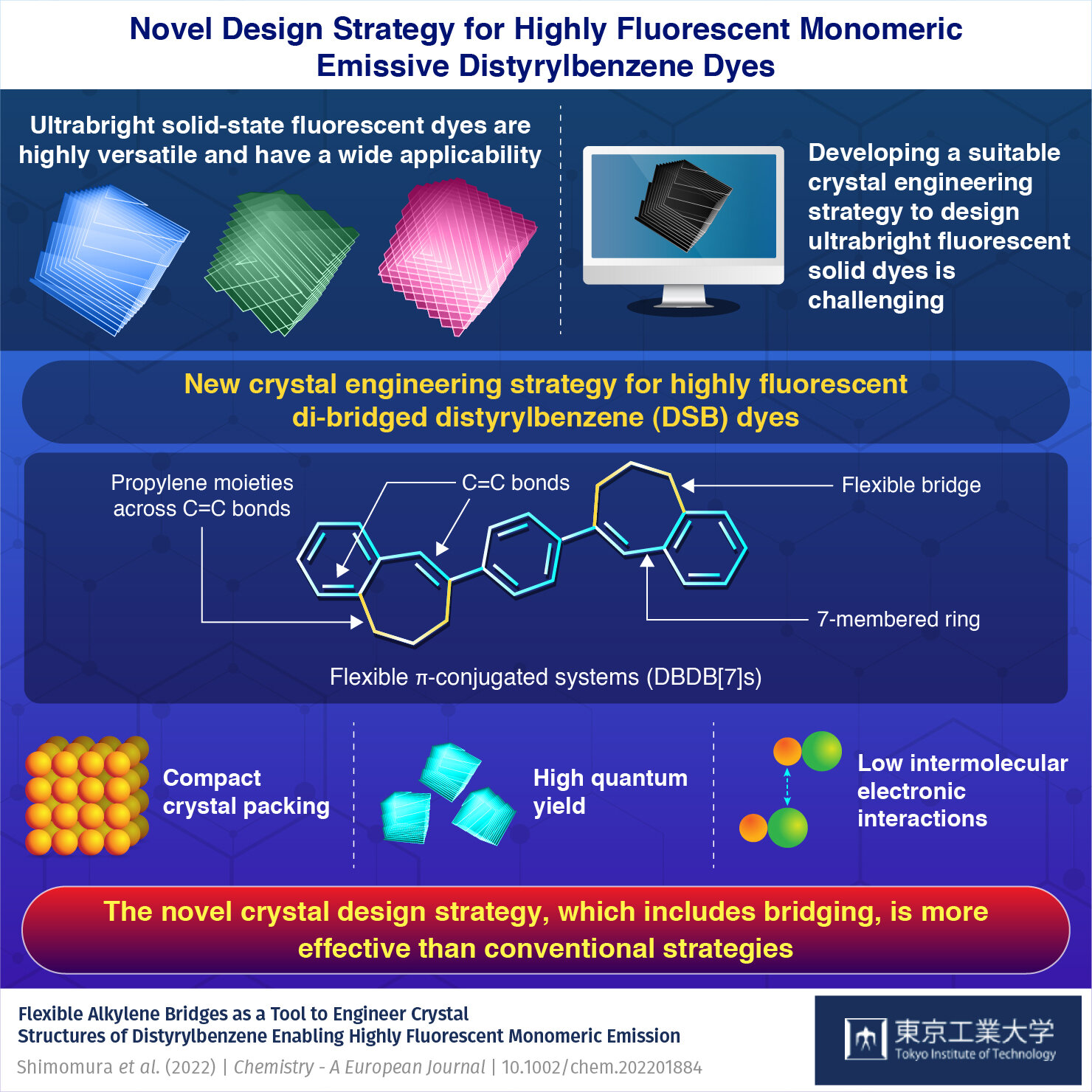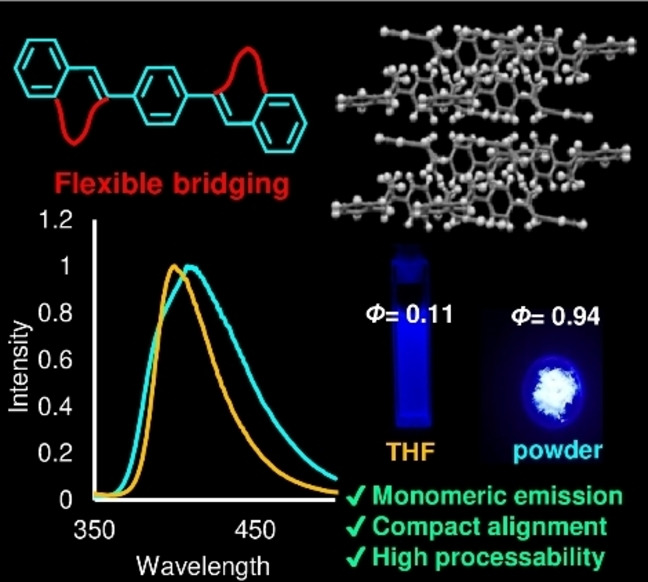New crystal engineering strategy to design ultrabright fluorescent solid dyes
When it comes to designing ultrabright solid-state fluorescent materials, bridged crystal designs might be the key to enabling monomeric emission and accessing novel crystalline systems, reveals a new study. A research team from Tokyo Institute of Technology prepared ultrabright fluorescent dyes using di-bridged distyrylbenzenes (DSBs) with flexible alkylene bridges, using a novel crystal engineering study. The findings have important implications for the field of photofunctional materials.
Fluorescent solid organic dyes have an array of applications ranging from functional nanomaterials and organic light-emitting diode (OLED) displays to lasers and bio-imaging. These molecules have excellent versatility, adaptable molecular designs, and excellent processability. Improving the luminescent properties, crystallinities, and emission colors of these solid-state fluorescent dyes is a key area of research in the field, especially for the design of advanced OLEDs. However, developments to this end are limited by three major factors. One, most fluorescent dyes experience concentration quenching (a reduction in fluorescence when the concentration of the fluorescing molecule exceeds a certain level) in the solid state. Two, the tendency of dye molecules to aggregate in the solid state and produce fluorescence of different colors due to the resulting intermolecular electronic interactions. And three, crystal design strategies that can ensure monomeric emission (essentially, emissions of a single wavelength, i.e., color) are underdeveloped.

